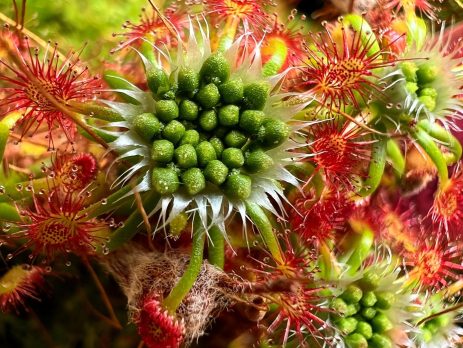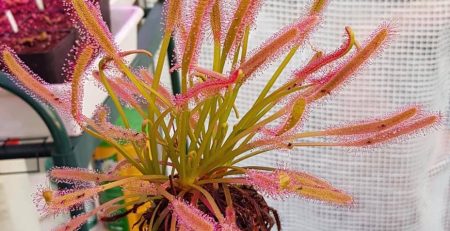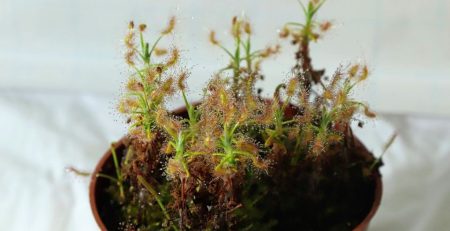What are some interesting facts about sundews?
Sundews, also known as Drosera, are a fascinating group of carnivorous plants known for their glistening, sticky tentacles that capture and digest small insects. Here are some interesting facts about sundews:
- Carnivorous Behavior: Sundews are carnivorous plants that derive nutrients from insects and other small prey. They have evolved a variety of mechanisms to capture, immobilize, and digest their prey.
- Sticky Tentacles: Sundew leaves are covered with glandular hairs that secrete a sticky, glue-like substance. When an insect lands on a leaf, it becomes trapped in the sticky substance.
- Movement: Many sundew species have leaves that can move in response to prey capture. The tentacles bend and wrap around the trapped insect, ensuring it remains firmly stuck.
- Enzymatic Digestion: Once an insect is captured, the sundew secretes enzymes that break down the prey’s body, allowing the plant to absorb essential nutrients, such as nitrogen and phosphorus.
- Global Distribution: Sundews can be found on every continent except Antarctica. They thrive in a variety of habitats, including bogs, wetlands, and moist heathlands.
- Diversity: There are over 200 species of sundews, with a wide range of sizes and appearances. Some are small, ground-hugging plants, while others have tall, erect stems.
- Leaf Shapes: Sundew leaves come in various shapes, from flat, round leaves to more elongated forms. The tentacles are usually densely packed on the leaf’s surface.
- Attractive Glands: Sundew tentacles often have bright, colorful glands that produce a sweet scent and visually attract insects.
- Nutrient-Poor Habitats: Sundews typically grow in nutrient-poor soils, and their carnivorous behavior allows them to supplement their nutrient intake in these environments.
- Cultivation: Many sundew species are popular among plant enthusiasts and can be cultivated as ornamental plants. They require specific care, including acidic, well-draining soil and high humidity.
- Hybrids: Hybridization between sundew species is common, resulting in a wide range of hybrid varieties with diverse characteristics.
- Mimicry: Some sundew species have evolved to mimic the appearance of other plants to attract insects more effectively. For example, the Cape sundew (Drosera capensis) has long, thread-like tentacles that resemble fungus gnat larvae, a common prey item.
- Conservation: While not all sundew species are threatened, some are at risk due to habitat destruction and illegal collection. Conservation efforts are in place to protect these vulnerable species.
- Medicinal Uses: Some indigenous cultures have used sundew extracts for their potential medicinal properties, including treating coughs and respiratory issues.
- Research: Sundews have been the subject of scientific study for their unique trapping mechanisms and the enzymes they produce. Their sticky tentacles have inspired biomimetic materials for various applications, including adhesives.
Sundews are captivating examples of how plants have adapted to thrive in nutrient-poor environments through carnivory. Their intricate trapping mechanisms and colorful appearance continue to fascinate botanists, researchers, and plant enthusiasts alike.




Leave a Reply
You must be logged in to post a comment.